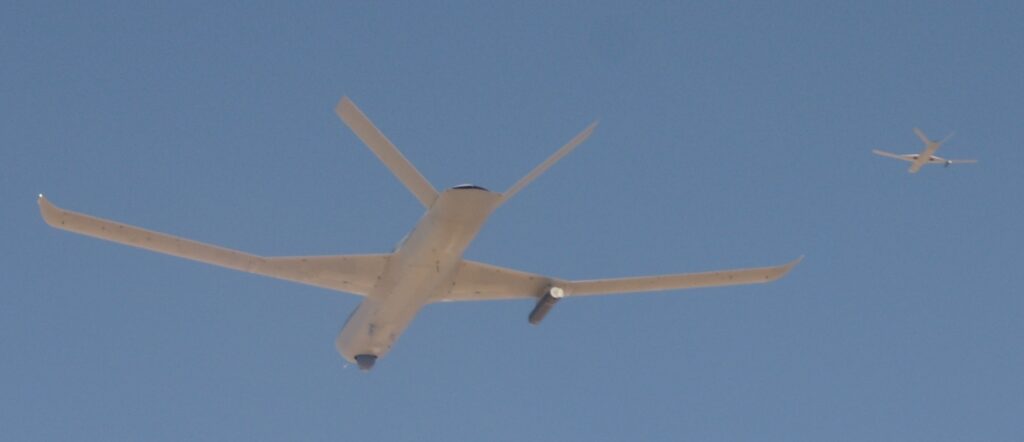The US Air Force (USAF) tested two Skyborg autonomy core system-equipped drones flying in tandem last month.
The multi-hour test flight came after a Skyborg-equipped unmanned aerial vehicle (UAV) conducted its maiden flight in April. The flight was the first stage of the USAF Research Laboratory’s Low-Cost Attritable Aircraft Technology project to develop cheaper unmanned alternatives to manned aircraft.
Drone-Teaming
In the second phase of the test flight, two General Atomics MQ-20 Avenger UAVs demonstrated in-flight communication between each other and “responded to navigational commands, stayed within specified geo-fences, and maintained flight envelopes,” while monitored from the ground command and control station.
Future tests will explore manned aircraft teaming up with multiple autonomy core system-equipped unmanned aircraft.
“Skyborg will provide the foundation on which the Air Force can build an airborne, autonomous ‘best of breed’ system of systems” that will adapt and orient to the battlespace and make decisions “at machine speed for a wide variety of complex mission sets,” the USAF stated in May.


Off-Board Sensing Station Contract
The USAF Research Laboratory, meanwhile, awarded matching $17.7 million contracts to Kratos and General Atomics Aeronautical Systems last week to create Off-Board Sensing Station (OBSS) drones as part of the push to develop low-cost, highly modular unmanned attritable aircraft.
The drones will fly alongside manned aircraft to help extend the aircraft’s sensing range and provide an additional weapons bay.
“The design and manufacturing of OBSS will incorporate scalable and responsive manufacturing technologies,” the notice stated. “This program will continue to validate low-cost design and manufacturing approaches for the attritable class of aircraft through flight demonstration.”


